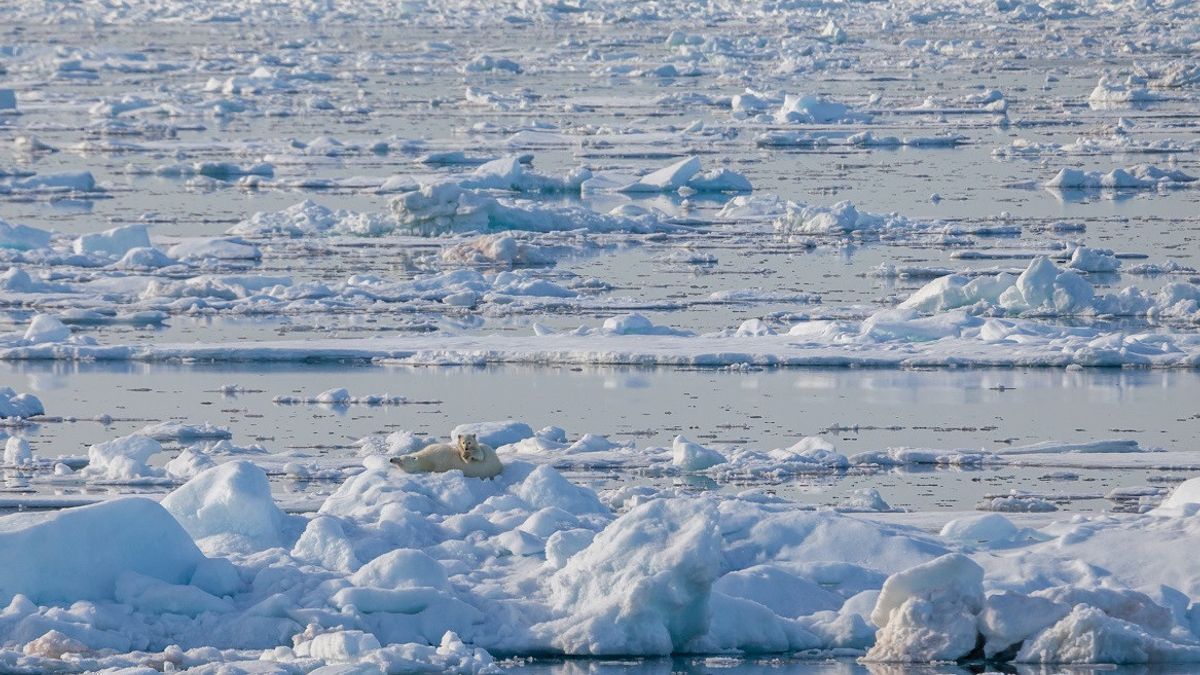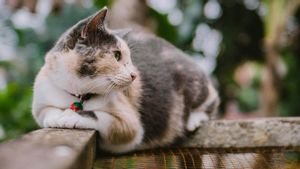JAKARTA - Greenland's isolated polar bear population has made clever adaptations to the decline in sea ice they rely on as a platform for hunting seals, offering a glimmer of hope for the species at least in some parts of the warming Arctic.
This population of several hundred bears, which inhabit part of Greenland's southeastern coast in the Danish Strait, has survived only brief access to ice formed from frozen seawater by hunting, rather than from chunks of freshwater ice that broke off from the massive Greenland Ice Sheet, said the researchers last Thursday.
"They survive in sea ice-free fjords for more than eight months of the year, because they have access to glaciers, fresh water, ice where they can hunt. This habitat, which means glacier ice, is rarely found in much of the Arctic." said University of Washington polar scientist Kristin Laidre, lead author of the study published in the journal Science.
They were found to be the most genetically isolated polar bears in the world, distinct from 19 other known populations of the species. They have been almost completely cut off from other polar bears for at least a few hundred years, with no evidence of any departure, although some evidence of occasional arrivals from elsewhere.

The bears "live on the edge of what we believe is physiologically possible," explains evolutionary molecular biologist and study co-author Beth Shapiro of the University of California, Santa Cruz and the Howard Hughes Medical Institute.
"These bears did not evolve. They reproduced more slowly, they were smaller in size. But, most importantly, they survived. It is difficult to know whether these differences are driven by genetic adaptation or simply by the different responses of polar bears. very different," added Shapiro.
Polar bears, numbering about 26,000, are critically threatened by climate change, as rising temperatures are reshaping the Arctic landscape and depriving them of the sea ice platforms they normally use to hunt for their main prey, ringed seals and bearded seals.
"The loss of Arctic sea ice remains a major threat to all polar bears. This study does not change that," Laidre said.
It is known that the population of southeastern Greenland is geographically surrounded, with jagged mountain peaks and the Greenland Ice Sheet on one side and the open sea on the other.
In spring, bears roam on sea ice and glaciers, with icebergs congealing into sea ice. While in summer, there is open water with chunks of glacial ice floating on the front of the glacier, where bears hunt. This type of habitat is found only in parts of Greenland and Svalbard, an Arctic Ocean archipelago.
"This use of glacier ice has never been documented before and represents a unique behavior," said John Whiteman, chief research scientist for the conservation group Polar Bears International and a professor of biology at Old Dominion University in Virginia, who was not involved in the study.

"This study should also encourage the search for similar habitats across today's polar bear ranges. However, glacial ice is a small component of the Arctic sea ice sheet, compared to ice formed from frozen seawater," Whiteman said.
The researchers collected genetic, movement and population data including satellite tracking of some bears and observing them from helicopters.
"They just look like little yellow dots on white ice, or you follow their tracks in the snow to find them," Laidre said.
Shapiro said the findings could provide a glimpse into how polar bears survived the previous warm period of roughly 500,000 years, since they separated evolutionarily from brown bears.
"The polar bear is in trouble," added Shapiro.
"It's clear that if we can't slow the pace of global warming, polar bears will become extinct. The more we can learn about this amazing species, the better our ability to help them survive in the future, 50 to 100 years."
The English, Chinese, Japanese, Arabic, and French versions are automatically generated by the AI. So there may still be inaccuracies in translating, please always see Indonesian as our main language. (system supported by DigitalSiber.id)













